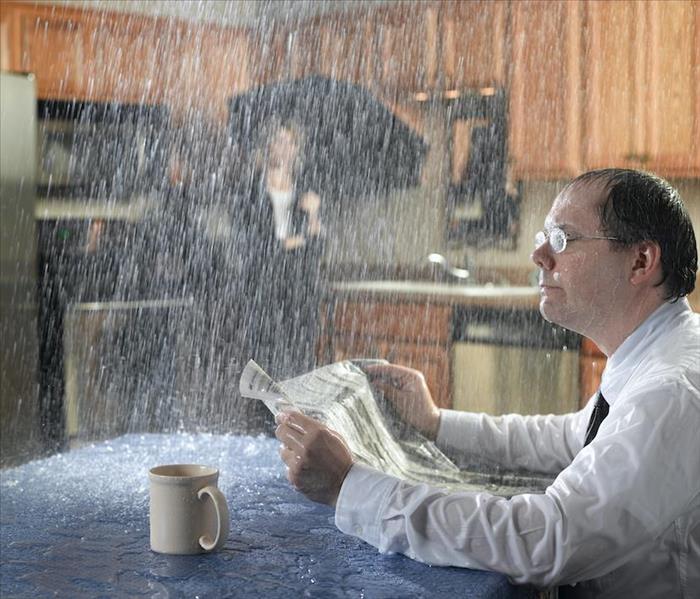What Are the Goals of Controlled Demolition as Part of Basking Ridge Flood Damage Restoration?
8/21/2021 (Permalink)
 Storm damage to your roof is no DIY project. SERVPRO has you covered for all storm damage restoration services from start to finish.
Storm damage to your roof is no DIY project. SERVPRO has you covered for all storm damage restoration services from start to finish.
SERVPRO Strategies to Remediate House and Basement Flooding in Basking Ridge are Always Research-Based Best Practices
Torrential rain, exterior destruction, and overland flood damage in Basking Ridge is a seasonal risk. When your home is affected, your stress level, already high, might go through your leaking roof from the storms when remediation experts recommend the tear-out of building materials.
Why Does SERVPRO Rely on Controlled Demolition for Water Damage Repairs?
We presume the flooding in your Basking Ridge home harbors bacteria, viruses, and other microbes. Floodwaters can contain:
- Sewage from street drain overflows
- Chemicals from industrial sites, landscaping, and pavement
- Animal and insect waste
This Category 3 water exposes your family to health risks and your structure to progressive deterioration if not removed thoroughly, dried out completely, and disinfected with EPA-registered products. Removing wet building materials in a planned manner facilitates the release of trapped contaminated water and permits effective structural drying and application of antimicrobials.
What Kinds of Controlled Demolition Can Basking Ridge Storm-Related Flood Victims Expect?
The SERVPRO crew uses a broad range of strategies to release the water for collection and disposal.
- Flood cuts slice through and remove drywall between studs several inches above the waterline.
- Weep holes punched through bulging surfaces on walls or near ceiling leaks allow water to drain out in a measured way, minimizing the risk of structural collapse.
- Holes drilled behind baseboards or in mortar joints give water trapped behind plaster, bricks, blocks, or stucco a pathway out.
The access gained allows us to pump or extract water and then direct warm, dehumidified air into the cavities to accelerate drying. Drying inhibits mold damage and increases the odds of retaining much of the structure, “Like it never even happened.”
SERVPRO of Bridgewater performs controlled demolition during flood restoration to deliver successful outcomes that avoid lingering secondary damage. Call us at (908) 222-2020 for a prompt assessment and professional assistance.






 24/7 Emergency Service
24/7 Emergency Service